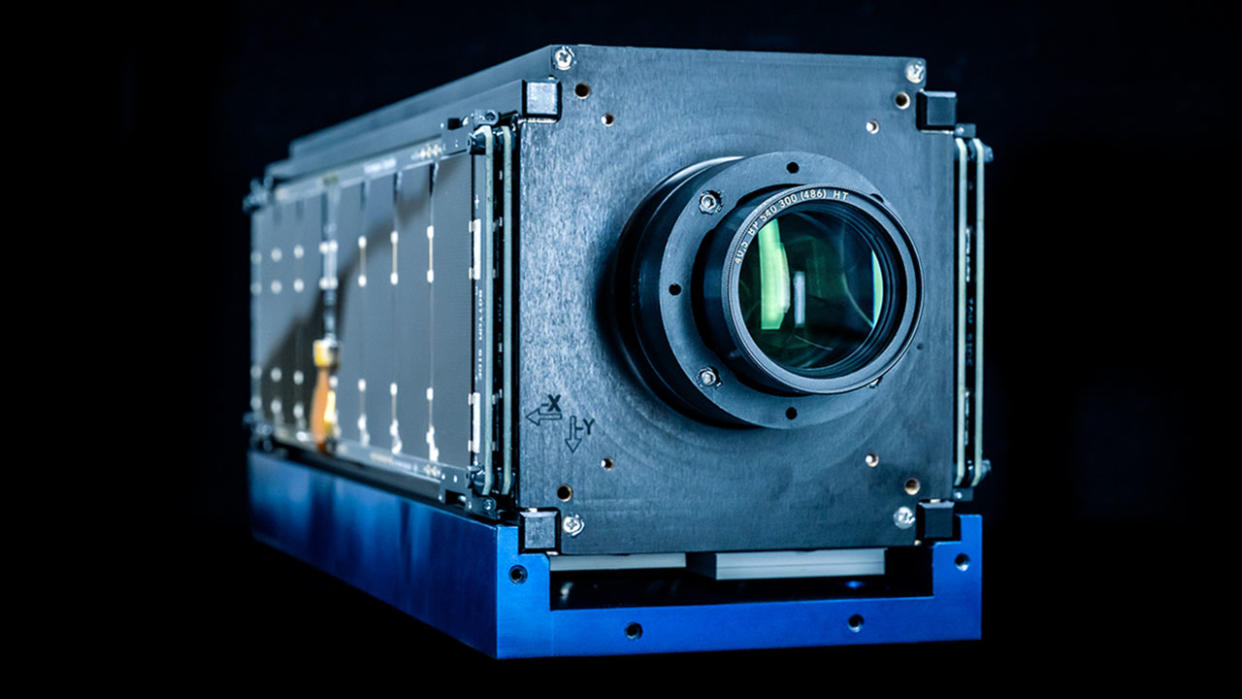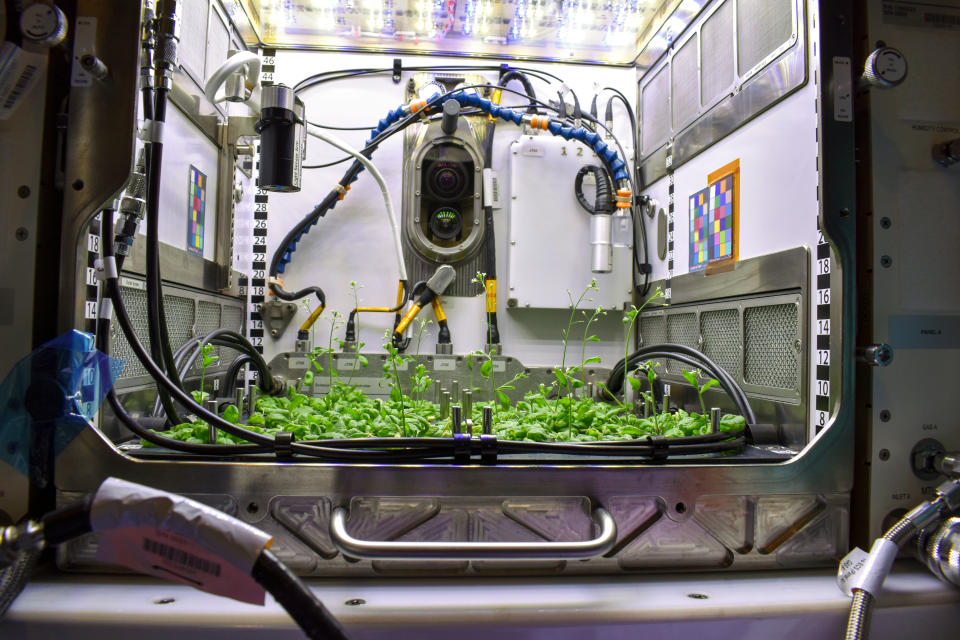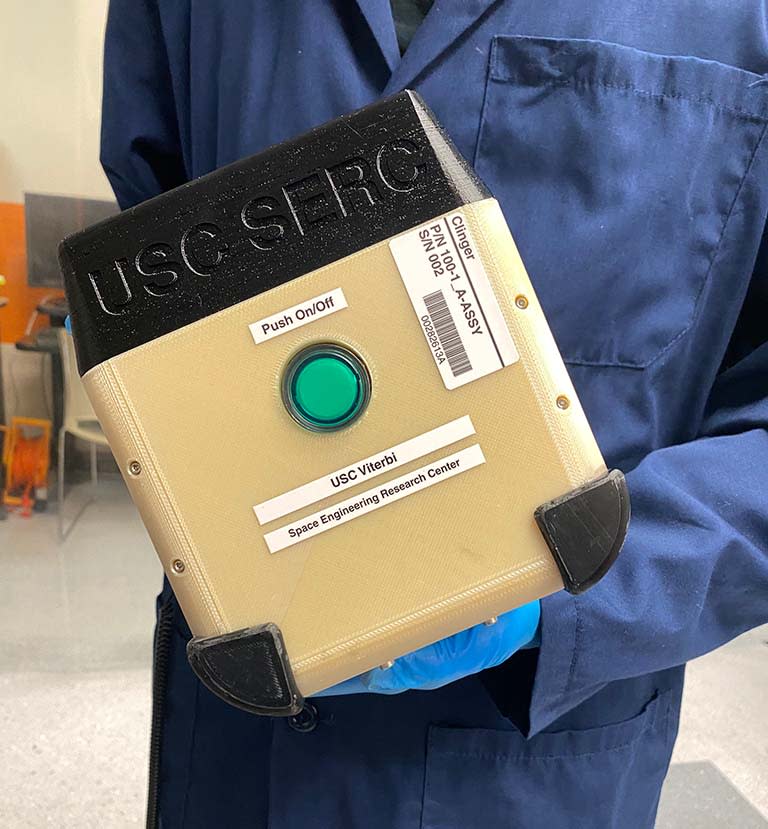World's 1st 'hacking sandbox' satellite and more to ride on SpaceX's next NASA cargo launch

SpaceX's 28th commercial resupply mission (CRS-28) is poised to launch new science experiments and provisions to the International Space Station (ISS) on Saturday (June 3).
The CRS-28 cargo mission is set to liftoff in a SpaceX Cargo Dragon capsule atop one of the company's Falcon 9 rockets at 12:35 p.m. EDT, from Launch Complex-39A at NASA's Kennedy Space Center in Florida. After a short stint playing orbital catch-up, the spacecraft is scheduled to rendezvous with the ISS around 5:30 a.m. ET (0930 GMT) on Monday, June 5.
CRS-28 will carry research, logistical supplies and necessities to the Expedition 69 crew currently aboard the ISS, according to a NASA briefing on the mission Tuesday (May 30). In addition to the host of new experiments headed to the laboratory in low-Earth orbit, CRS-28 will also resupply over 30 ongoing investigations already aboard the ISS, according to ISS chief scientist Kurt Costello.
Costello described the mission manifest as "a very good mix of biological payloads, tech demos and some earth science monitoring." Indeed, the new research headed to the station includes studies exploring DNA changes in microgravity, automated spacecraft docking prototypes, a study into blue energy discharges from thunderstorms, a handful of cubesats from student project groups across Canada and the IROSA solar arrays to augment electricity generation at the station.
Related: International Space Station — Everything you need to know

Six cubesats are launching on CRS-28, and will be released into orbit as a part of the Nanoracks-26 mission. One cubesat, named Moonlighter, is being flown as a cybersecurity testing target. It was developed by the Aerospace Corporation with help from the Air Force Research Laboratory and Space Systems Command, who are challenging industry professionals to compete to successfully hack the small satellite in order to test cybersecurity systems in space.
The issue of satellite cybersecurity became even more relevant after SpaceX CEO Elon Musk reported last year that Starlink satellites in Ukraine are experiencing a high level of cyberattacks from Russia.
Plant Habitat-03 (PH-03) is a project led by University of Florida researchers Dr. Ann-Lisa Paul and Robert Ferl, and comes from the 2022 Genes in Space competition winner Pristine Onohua. Onohua is a student at East Chapel Hill High School in North Carolina, and her project was selected from amongst over 600 proposals from students ranging in grades 7-12.
PH-03 focuses on measuring telomeres. Telomeres are genetic structures that function to protect chromosomes. Over time, these structures shorten and wear with age, but telomeres have been observed to lengthen while in space. That discovery was made through NASA's Twin Study with astronauts Scott and Mark Kelly, whose telomeres were measured and compared to one another's following Scott's year in space.
A previous study flown to the ISS using a plant called arabidopsis thaliana observed the the same genetic changes to the length of their telomeres. Paul explained the versatility of that particular plant during Tuesday's briefing.
"It is a member of a mustard family. And so it's really closely related to things like well, mustard greens and collard greens and broccoli and, and a lot of the things that do comprise the crop venue for for exploration habitats," Paul said. "And so a lot of things that we are learning about how arabidopsis responds to spaceflight is directly translatable to how similar family crop plants will also respond."

Seedlings from the previously flown arabidopsis thaliana are now being sent as a part of PH-03. The project will test methods for measuring telomeres in space, the process for which gets complicated when you remove gravity, and also whether or not any of the mutated genes from the first generation of arabidopsis thaliana was passed down to these new, space-bound samples.
Also stowed within the hold for CRS-28 is University of Southern California docking prototype CLINGERS. Once aboard the ISS, CLINGERS will be making quick robotic friends with the station's resident Astrobee helper-droids. CLINGERS is designed to test a new autonomous rendezvous system that enables both active and passive docking.

CLINGERS will float alongside the Astrobees to test its maneuverability software. If successful, the system could allow future space stations modules to configure and arrange themselves with other modules, allowing for far easier on-orbit assembly.
Thor-Davis is a project from the European Space Agency (ESA) to investigate newly discovered blue discharges that occur in high altitudes above thunderstorms. "We want to take advantage of the vantage point of the International Space Station," said Thor-Davis principal investigator Olivier Chorion during the mission briefing. "Since from from there, we can look at thunderstorms from above. In fact, with this investigation, we want to focus on the activity at the top of the clouds and above."
The five other cubesats flying on CRS-28 are all student-led projects supported by the Canadian Space Agency (CSA) under the Canadian CubeSat Project (CCP). "It's a very exciting moment for several young Canadian students who worked very hard over the past five years to design and build their cubesat," said CSA's manager of space science and technology Tony Pellerin.
The stated primary goal for each of the student groups' cubesat missions is also the cornerstone of the CCP mission to empower Canadian students to take part in real-life space missions. However, each of the CRS-28 cubesats' mission focus differs from the others.
RADSAT was designed by students from the University of Saskatchewan to test a new kind of radiation dosimeter. An onboard camera was also included to capture orbital views of Saskatchewan in the hopes of sharing the images with the Canadian province.
Equipped with a different kind of camera, the UKPIK cubesat comes from the Western University - Nunavut Arctic College in Ontario. UKPIK will fly with a virtual reality camera attached, and researchers are hoping to give NAC students the opportunity to operate an immersive virtual reality experience.
SC-ODIN, from Concordia University in Quebec, is Space Concordia's Orbital Dust Imaging Nanosat. SC-ODIN researchers hope to characterize aerosol particles from dust storms near Lake Colhué Huapí in Argentina, and Namibian coastal regions.
"Two of these missions, ESSENCE and IRIS carry novel science payloads," explained Pellerin during the CRS-28 press call. ESSENCE is an Earth observation mission from New York University in Ontario. The mission will monitor permafrost thaws and deterioration in Canada's northern regions. The probe also carries an instrument for measuring the density of solar protons, charged particles shot out of the sun during coronal mass ejections.
"This type of mission will bring great benefits to Canadians, and not only Canadians, but the world population, in making sure that we understand those climate change effects," Pellerin said.
RELATED STORIES:
— Astronauts relocate SpaceX Dragon capsule on space station
— Cubesats: Tiny Payloads, Huge Benefits for Space Research
— Russia agrees to stay aboard International Space Station through 2028
The IRIS cubesat was developed by research students at the University of Manitoba and middle school students in Canada. IRIS contains 20 geological samples that will be monitored for their deterioration when exposed to an in-space environment. For comparison, observation of the materials will be used alongside analyses of past asteroid samples to help better understand asteroid origins and the effects space has on other planetary bodies.
CRS-28 arrives on the heels of a recent departure from the ISS. Axiom Space's second crewed mission to the station (Ax-2) departed from its berth at the orbital lab, returning four private astronauts from an eight-day mission.
The CRS-28 cargo Dragon will occupy the zenith docking port on the ISS's Harmony for about a month before splashing down off the coast of Florida to return experiment samples and station waste from ongoing crew rotations.

